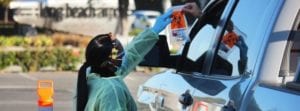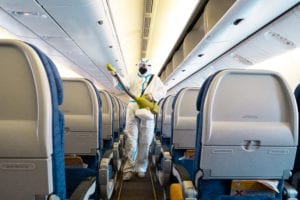By Craig Beam
There’s no question about it: American children and young adults suffered a loss after COVID-19 forced schools and universities to close last year.
The educational ramifications of the sudden shift to remote learning were heavy enough on their own. When the primary connection between student and teacher was taken out of the classroom and crammed into a Zoom window, personalized learning was limited — which, in turn, led children’s academic performance to decrease. Mathematical achievement in K-12 students dipped significantly, and learning loss was particularly pronounced in students from minority groups and those with disabilities.
Meanwhile, the social-emotional implications carry a weight all their own. The need for internet access to attend school highlighted technological inequities (the “digital divide”) among students; factors ranging from location to a family’s financial stability affected whether students could hop online to join class or knock out an assignment at a given moment. And a year of isolation from peers and teachers dealt a blow to student mental health — the prevalence of moderate to severe anxiety and depression among college students in particular increased considerably.
So, with the number of Americans fully vaccinated against the coronavirus only now approaching 50%, the question inevitably arises: How do we keep this from happening again in our schools, even as new cases and variants of COVID-19 continue to emerge – such as the Delta variant now responsible for 90% of new infections in the UK? There’s a lot to be said for health mitigation measures such as social distancing (the Centers for Disease Control and Prevention still recommends 3-foot distancing among all K-12 students, as well as 6 feet among secondary students in high-transmission settings). Proper ventilation, too, is a reliable tactic to employ in school buildings.
But if your school seeks a lasting solution to prevent another interruption to in-person learning next year and beyond, frequent and reliable COVID-19 testing is the only way to go — the quicker and more accurate the results, the better.
How important is testing, really?
In places as active and dense as schools and college campuses, physical distancing and enhanced ventilation can only go so far.
Even if a school has social distancing, mask-wearing and hand-washing rules, keeping kids — particularly those on the younger side — from making contact and spreading germs is a nearly Olympian task. We all love the kids in our lives, but the honest truth is that any child or teen who regularly goes to school with dozens of others their age automatically becomes a walking petri dish. Further, vaccines for children under 12 aren’t currently available, and, even though they’re less likely to contract the virus, they aren’t immune and can still spread it to higher-risk individuals.
Infectious disease experts have stressed the importance of school-based testing to safely reopening K-12 schools — a demand our country can more readily meet now than in the earlier days of the pandemic, thanks to a higher supply of testing materials. Unlike the start of the 2020-21 academic year, when schools simply sent in-person students home after an outbreak, administrators today can test large numbers of students for COVID-19 and keep those who test negative in the classroom.
This tactic’s effectiveness was demonstrated earlier this year in Utah, where 28 high schools reported large virus outbreaks. Rather than sending kids home, 13 schools tested their students; 99.3% of the 13,809 students tested received negative results and continued in-person instruction. In scenarios like this, testing doesn’t just keep students and staff safe — it makes sure kids who can be in the classroom stay in the classroom.
Testing plays a similarly crucial role in keeping in-person learning afloat at colleges and universities. Consider that college students’ lives outside the classroom are spent in near-constant proximity to one another. When they’re not living more or less on top of one another in dorms and apartments, they’re crowding into restaurants and dining halls, and packing stadiums and arenas for sporting events. Testing students every two to three days is a better strategy for monitoring campus infection rates than simple symptom checks, as many mild and asymptomatic cases don’t exhibit a fever or other symptoms.
Some experts have recommended schools use cost-effective antigen (rapid) tests, but these come with deficits and risks of their own — risks we shouldn’t so readily accept if we’re wanting to truly put COVID behind us.
Why go with PCR over rapid testing?
In short, antigen tests yield correct results about half of the time, while gold-standard PCR tests are 98-99% accurate — a sizeable gap when you consider all that’s on the line. And the advantages of PCR testing go far beyond accuracy.
Antigen tests are simply inferior to PCR tests when screening asymptomatic students. Unlike PCR tests, antigen tests only pick up on whether someone is truly infected with COVID-19 — not whether they’re merely incubating the disease. Overlooking these factors can enable the virus to silently spread among congested populations.
Schools have steadily begun to adopt PCR testing procedures, with great success. New York City Public Schools, the nation’s largest school district, conducts random, mandatory PCR tests on about 20% of each school’s students and staff every week. That proactivity kept the school system’s percent positivity rate at 0.57% in March — more than 6 percentage points lower than the city’s overall rate.
Another tactic is “pooled” PCR testing, where combined samples from a cluster of students or staff are tested as one. A negative result means the group is considered virus-free, while a positive result requires each student or staffer to be individually tested. The CDC has said pooling samples is a cost-effective tactic, particularly when you expect a very low positivity rate.
PCR testing catches the virus in its tracks more effectively than antigen testing. Make no mistake, many school systems have embraced routine antigen testing. But routinely testing your school community with the highest-quality materials on the market will deliver greater confidence in the health of your faculty, staff and students.
Conventional use of PCR testing required sending samples to a lab, putting you at a significant time disadvantage. That’s where Worksite Labs comes in: We bring the lab to you.
What can Worksite Labs do for your school?
The Worksite Labs model can serve schools that wish to keep students as safe and healthy as possible without compromising on time. We pack a fully-functioning COVID-19 testing lab — equipped with the best PCR equipment money can buy — inside a recycled shipping container and bring it straight to your school’s front doorstep, meaning samples can arrive in minutes after nasal squabs are taken. One of our portable labs can process thousands of tests in a single shift, so whether you run a Division I football powerhouse or a local school district with thousands of students, we can handle your testing needs.
Our recent partnership with the Big West Conference proves the power of on-site testing, particularly for college athletic programs. Thanks to our rapid turnaround time and unparalleled accuracy, the University of Hawaii men’s volleyball team was able to venture to Ohio, where clenched their first national title. I daresay Worksite Labs made that historic feat possible.
Processing such a high number of tests at a given time also will help sporting events and other large gatherings ensure participants’ health as venue capacity increases. COVID-19 meant millions of students around the country missed proms, homecoming games and job fairs. But with the convenience and reliability we offer, young Americans will no longer have to make such sacrifices.
In-person schooling is the ideal way to most effectively provide children and young adults with the holistic education and social-emotional growth they deserve. Worksite Labs is here to help you continue to serve the leaders of tomorrow with top-tier testing, today.
Craig Beam is the executive chairman of Worksite Labs.




